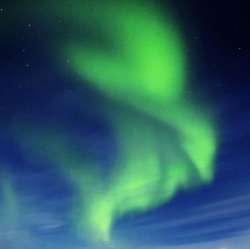
A major cosmological experiment designed to hunt for gravitational waves, ripples in spacetime predicted by Albert Einstein, has observed them directly for the very first time and may be close to formally announcing the findings. If confirmed, this would be one of the most significant physics discoveries of the last century.
While no official announcement has been made, physicist Lawrence Krauss has posted a few Tweets that amount to a scientific spilling of the beans.
According to Einstein’s general theory of relativity, gravity is how mass deforms the shape of space: near any massive body, the fabric of space becomes curved. But this curving does not always stay near the massive body.
In particular, Einstein realized that the deformation can propagate throughout the Universe, just as seismic waves propagate in Earth’s crust. Unlike seismic waves, however, gravitational waves can travel in empty space, and they do so at the speed of light.
The Laser Interferometer Gravitational-Wave Observatory (LIGO) has been hunting for gravitational waves since 2002 with no luck. But a more powerful, advanced LIGO that’s about three times more sensitive than the original detector started operating in just last fall.
LIGO is designed to open the field of gravitational-wave astrophysics through the direct detection of gravitational waves. The multi-kilometer-scale gravitational wave detectors use laser interferometry to measure the minute ripples in space-time caused by passing gravitational waves.
These phenomena could have been created from cataclysmic cosmic sources like the merging of pairs of neutron stars or black holes, or by supernovae. LIGO consists of two widely separated interferometers within the United States, one in Hanford, Washington and the other in Livingston, Louisiana, operated in unison.
The confirmed discovery of gravity waves would further support the theory of inflation, the idea that in the first few moments the universe existed, it underwent a rapid and incredibly massive expansion. That kind of rapid expansion would almost certainly leave behind ripples through spacetime and imprinting the cosmic background radiation.
The most important thing about this discovery, if proven, is that it could be a way to link up quantum and classical physics, a step to a Theory of Everything for physics.
